Announcements
Field of View
'Alopeke and Zorro have two sets of optics which allow selecting between "Speckle" mode and "Wide-Field" mode. Both modes slightly underfill the detector resulting in circular fields-of-view.
The diameter of the unvignetted wide-field is ~35" (~60" diameter with vignetting). See the vignetting maps in the following table where contours have been overplotted at 10% vignetting intervals, and the green box indicates the size of the 512x512 ROI.
| Speckle | Wide-Field | |||
| Field of View | 6.7" | 60" | ||
| Camera | Blue | Red | Blue | Red |
| 'Alopeke Pixel Size | 0.00992" | 0.01095" | ~0.0725" | |
| Zorro Pixel Size | 0.00991" | 0.01093" | ~0.0725" | |
| 'Alopeke Vignetting | 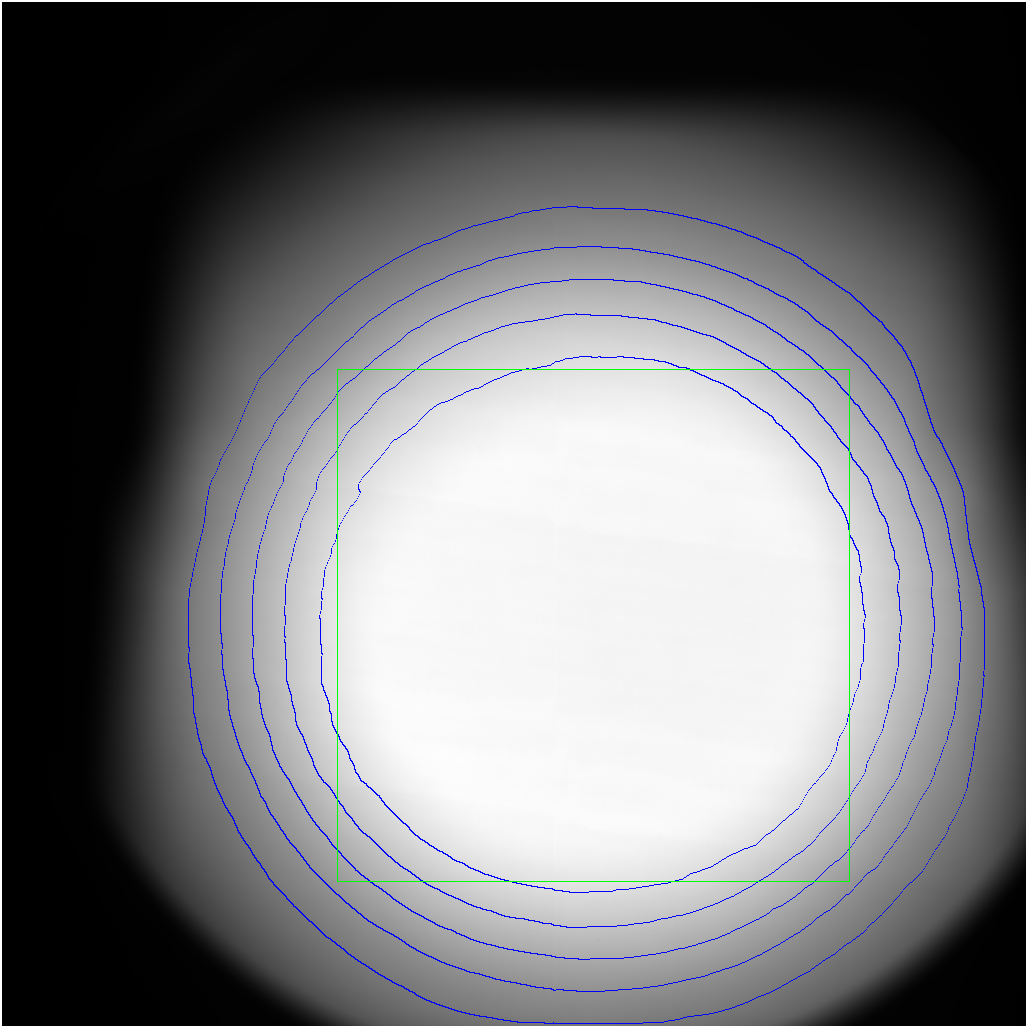 |
 |
||
| Zorro Vignetting |  |
 |
||
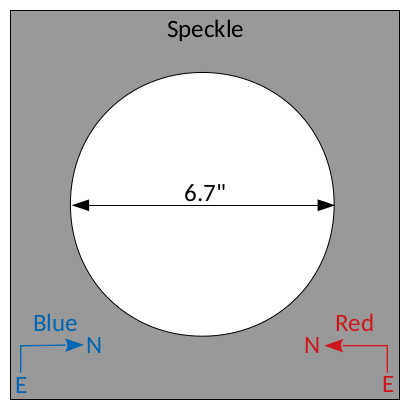

Compass indicators are for the EMCCD amplifiers. When using the conventional amplifiers the images are reversed along the x-axis, and this is not accounted for in the WCS.
Sensitivity
We present several figures to display the sensitivity of `Alopeke and Zorro at Gemini North and South, reproduced with the authors' permission. Below, we show the 5-sigma contrast curves for observations taken between 2019 and 2020 using `Alopeke (Left panel) and Zorro (Right Panel). Stellar companions with a separation and delta magnitude that fall below a given curve are detectable with speckle imaging. Blue lines show the curves for data taken using either 466 or 562 nm filters and the red lines display the curves for data taken using either the 716 or 832 nm filters. The black lines show the fits to the 562 and 832 nm data.

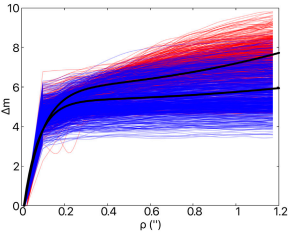
For more information on these plots, please see Scott et al. 2021.
To further highlight the capabilities of Gemini+Speckle, we show two figures displaying delta magnitudes achieved as a function of target magnitude at set angular separations for both `Alopeke and Zorro from Howell & Furlan (2022). Changing colors in the figures represent changes in the seeing while the size of the dots show the number of sets taken for that observation.
`Alopeke (HF2022, Fig 8):

Zorro (HF2022, Fig 9):
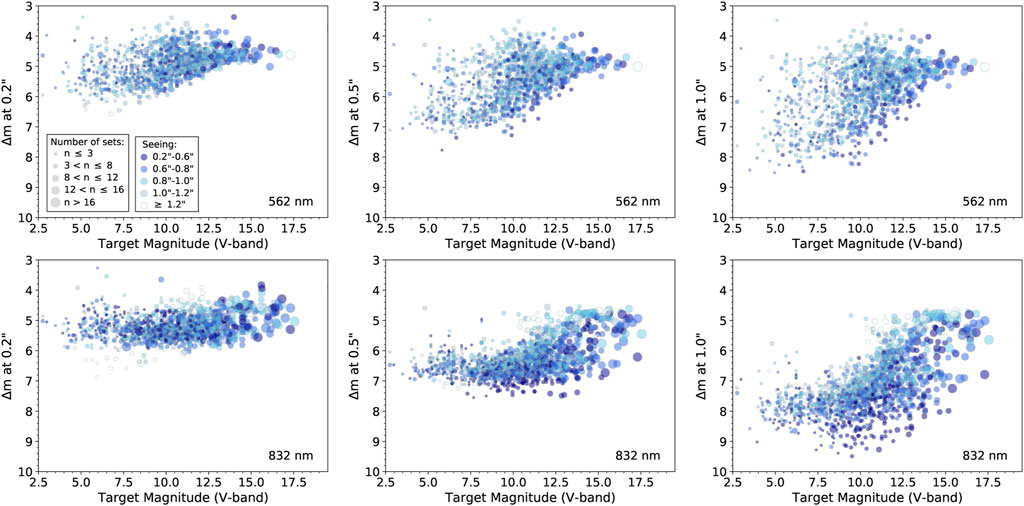
Additionally, the following figure from Matson, Howell and Ciardi (2019), reproduced with permission of the authors, shows the 5-sigma detection limit curves for 'Alopeke. Note how the contrast for 'Alopeke is slightly better than DSSI, mostly given the improvement in the detectors. Zorro curves are expected to be very similar.
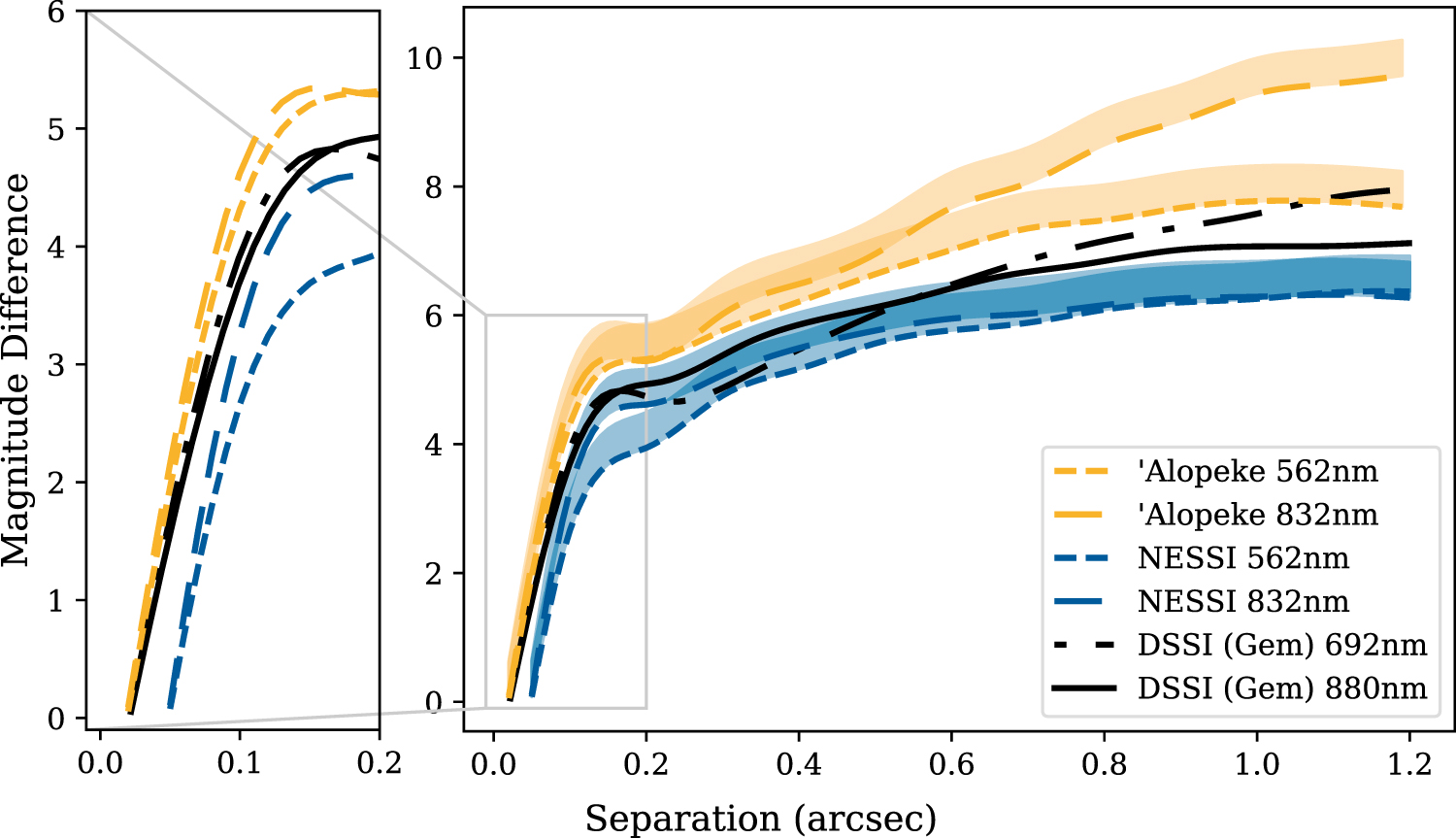
Guiding Options
'Alopeke and Zorro use the Gemini peripheral wavefront sensor PWFS2 for guiding. PWFS2 operates at optical wavelengths and can guide on stars as close as 4' and as far as 7' from the science target. Guide star selection is done automatically by the Observing Tool, although it is recommended that users verify the guide stars, rejecting extended object and spurious catalog entries.